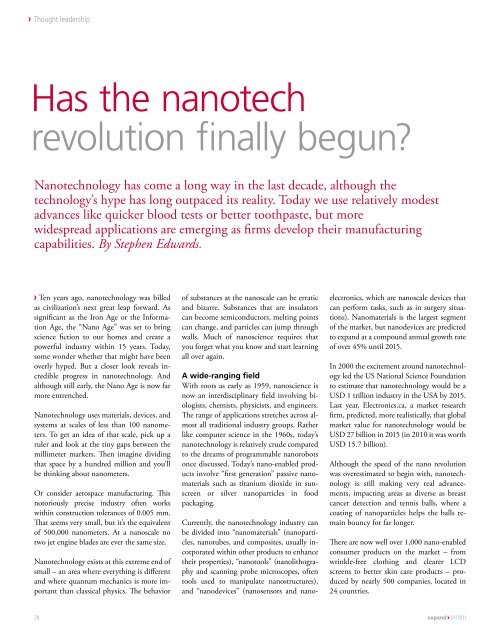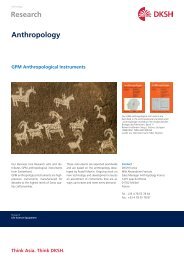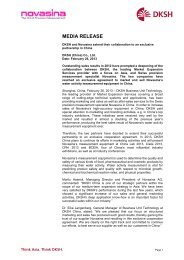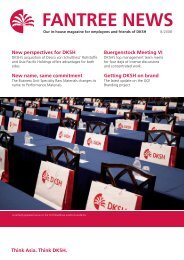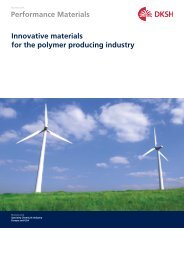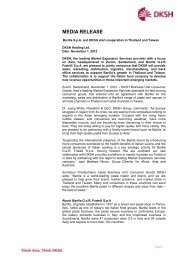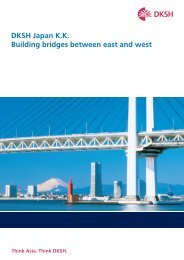Create successful ePaper yourself
Turn your PDF publications into a flip-book with our unique Google optimized e-Paper software.
Thought leadershipHas the nanotechrevolution finally begun?Nanotechnology has <strong>com</strong>e a long way in the last decade, although thetechnology’s hype has long outpaced its reality. Today we use relatively modestadvances like quicker blood tests or better toothpaste, but morewidespread applications are emerging as firms develop their manufacturingcapabilities. By Stephen Edwards.Ten years ago, nanotechnology was billedas civilization’s next great leap forward. Assignificant as the Iron Age or the InformationAge, the “Nano Age” was set to bringscience fiction to our homes and create apowerful industry within 15 years. Today,some wonder whether that might have beenoverly hyped. But a closer look reveals incredibleprogress in nanotechnology. Andalthough still early, the Nano Age is now farmore entrenched.Nanotechnology uses materials, devices, andsystems at scales of less than 100 nanometers.To get an idea of that scale, pick up aruler and look at the tiny gaps between themillimeter markers. Then imagine dividingthat space by a hundred million and you’llbe thinking about nanometers.Or consider aerospace manufacturing. Thisnotoriously precise industry often workswithin construction tolerances of 0.005 mm.That seems very small, but it’s the equivalentof 500,000 nanometers. At a nanoscale notwo jet engine blades are ever the same size.Nanotechnology exists at this extreme end ofsmall – an area where everything is differentand where quantum mechanics is more importantthan classical physics. The behaviorof substances at the nanoscale can be erraticand bizarre. Substances that are insulatorscan be<strong>com</strong>e semiconductors, melting pointscan change, and particles can jump throughwalls. Much of nanoscience requires thatyou forget what you know and start learningall over again.A wide-ranging fieldWith roots as early as 1959, nanoscience isnow an interdisciplinary field involving biologists,chemists, physicists, and engineers.The range of applications stretches across almostall traditional industry groups. Ratherlike <strong>com</strong>puter science in the 1960s, today’snanotechnology is relatively crude <strong>com</strong>paredto the dreams of programmable nanorobotsonce discussed. Today’s nano-enabled productsinvolve “first generation” passive nanomaterialssuch as titanium dioxide in sunscreenor silver nanoparticles in foodpackaging.Currently, the nanotechnology industry canbe divided into “nanomaterials” (nanoparticles,nanotubes, and <strong>com</strong>posites, usually incorporatedwithin other products to enhancetheir properties), “nanotools” (nanolithographyand scanning probe microscopes, oftentools used to manipulate nanostructures),and “nanodevices” (nanosensors and nanoelectronics,which are nanoscale devices thatcan perform tasks, such as in surgery situations).Nanomaterials is the largest segmentof the market, but nanodevices are predictedto <strong>expand</strong> at a <strong>com</strong>pound annual growth rateof over 45% until 2015.In 2000 the excitement around nanotechnologyled the US National Science Foundationto estimate that nanotechnology would be aUSD 1 trillion industry in the USA by 2015.Last year, Electronics.ca, a market researchfirm, predicted, more realistically, that globalmarket value for nanotechnology would beUSD 27 billion in 2015 (in 2010 it was worthUSD 15.7 billion).Although the speed of the nano revolutionwas overestimated to begin with, nanotechnologyis still making very real advancements,impacting areas as diverse as breastcancer detection and tennis balls, where acoating of nanoparticles helps the balls remainbouncy for far longer.There are now well over 1,000 nano-enabledconsumer products on the market – fromwrinkle-free clothing and clearer LCDscreens to better skin care products – producedby nearly 500 <strong>com</strong>panies, located in24 countries.28 <strong>expand</strong> 01/2011


